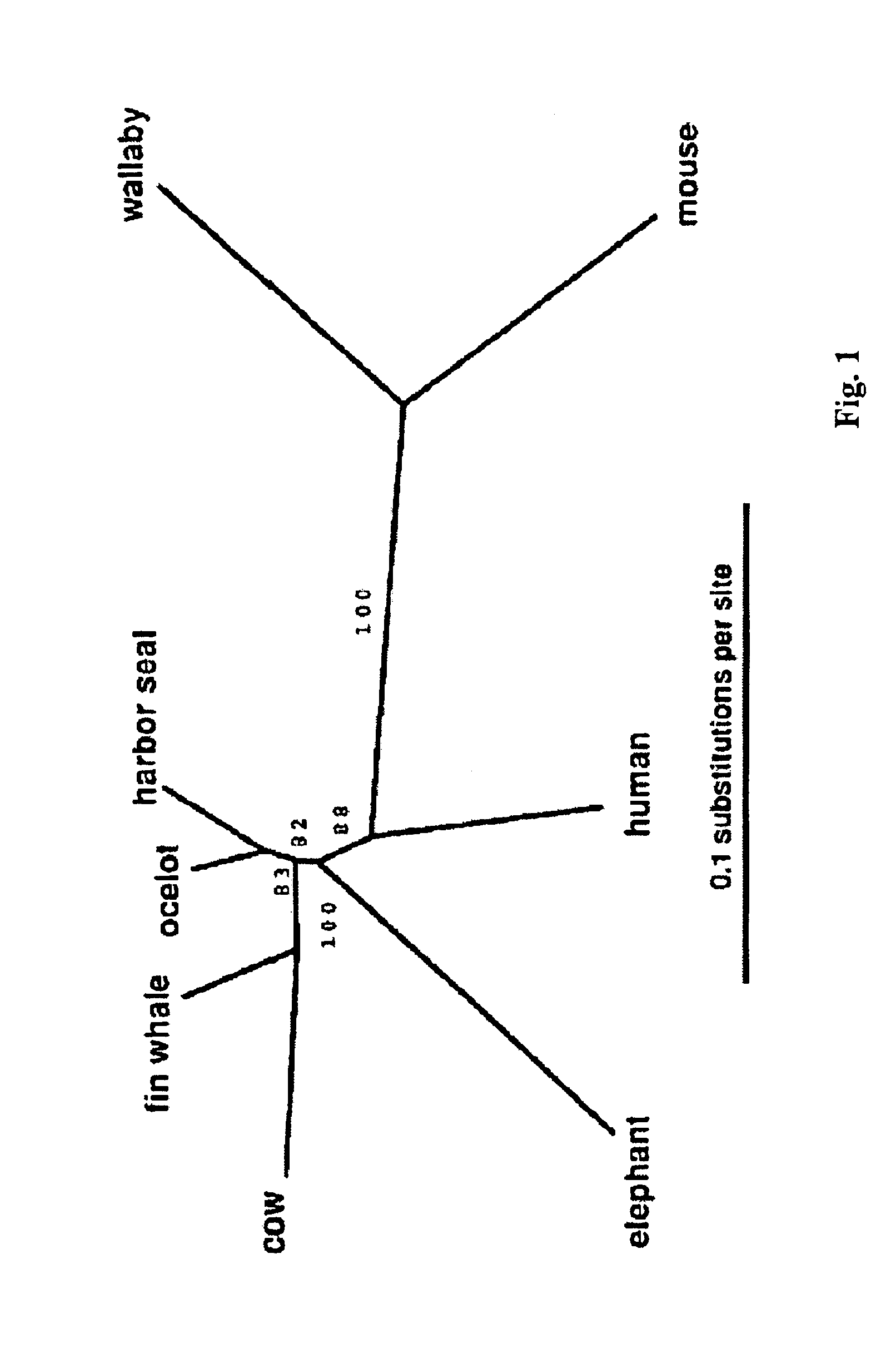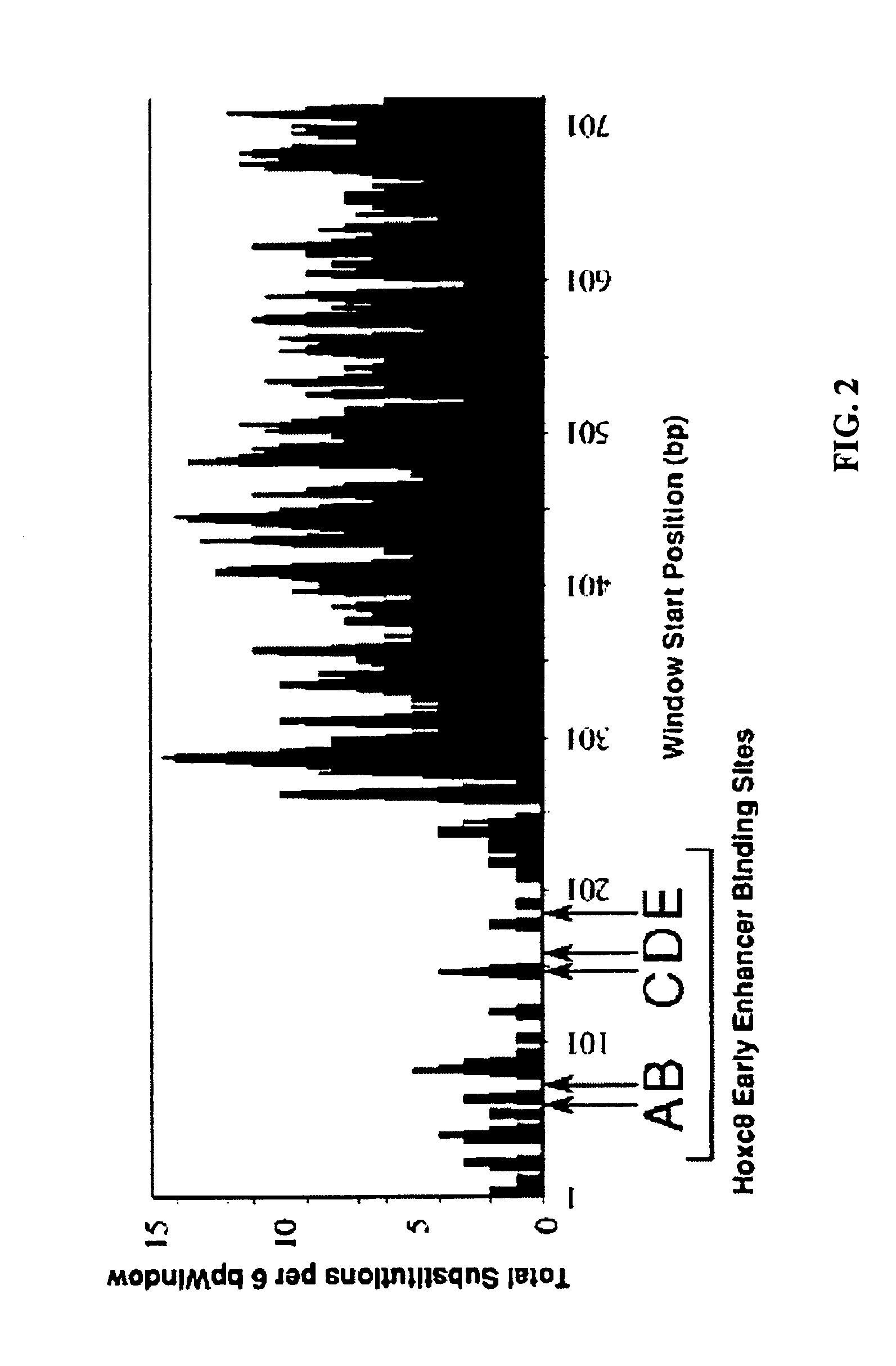Efficient cis-element discovery method using multiple sequence comparisons based on evolutionary relationships
a technology of evolutionary relationships and sequence comparisons, applied in material analysis, instruments, measurement devices, etc., can solve the problems of time-consuming and expensive, difficult to find control elements in non-coding dna, and difficult to search non-coding dna for known control elements by sequence analysis, etc., to achieve efficient search of non-coding dna
- Summary
- Abstract
- Description
- Claims
- Application Information
AI Technical Summary
Benefits of technology
Problems solved by technology
Method used
Image
Examples
Embodiment Construction
[0017]The invention is directed to a method for genome analysis, and more particularly to a method for efficiently searching non-coding DNA for known control elements. As used herein, the terms “control element,”“control motif,”“cis-element,” and “short conserved DNA sequence” are used interchangeably, referring to DNA sequences, such as initiation signals, enhancers, promoters and silencers, which induce or control transcription of DNA sequences with which they are operably linked. Control elements of a gene may be located in introns, exons, coding regions, and 3′ flanking sequences. Some control elements are “tissue specific,” i.e., affect expression of the selected DNA sequence preferentially in specific cells, while others are active in many or most cell types. Such control elements can serve as binding sequences for proteins such as transcription factors.
[0018]In certain embodiments, the method of the present invention can be used to efficiently identify short conserved DNA seq...
PUM
 Login to View More
Login to View More Abstract
Description
Claims
Application Information
 Login to View More
Login to View More - R&D
- Intellectual Property
- Life Sciences
- Materials
- Tech Scout
- Unparalleled Data Quality
- Higher Quality Content
- 60% Fewer Hallucinations
Browse by: Latest US Patents, China's latest patents, Technical Efficacy Thesaurus, Application Domain, Technology Topic, Popular Technical Reports.
© 2025 PatSnap. All rights reserved.Legal|Privacy policy|Modern Slavery Act Transparency Statement|Sitemap|About US| Contact US: help@patsnap.com



